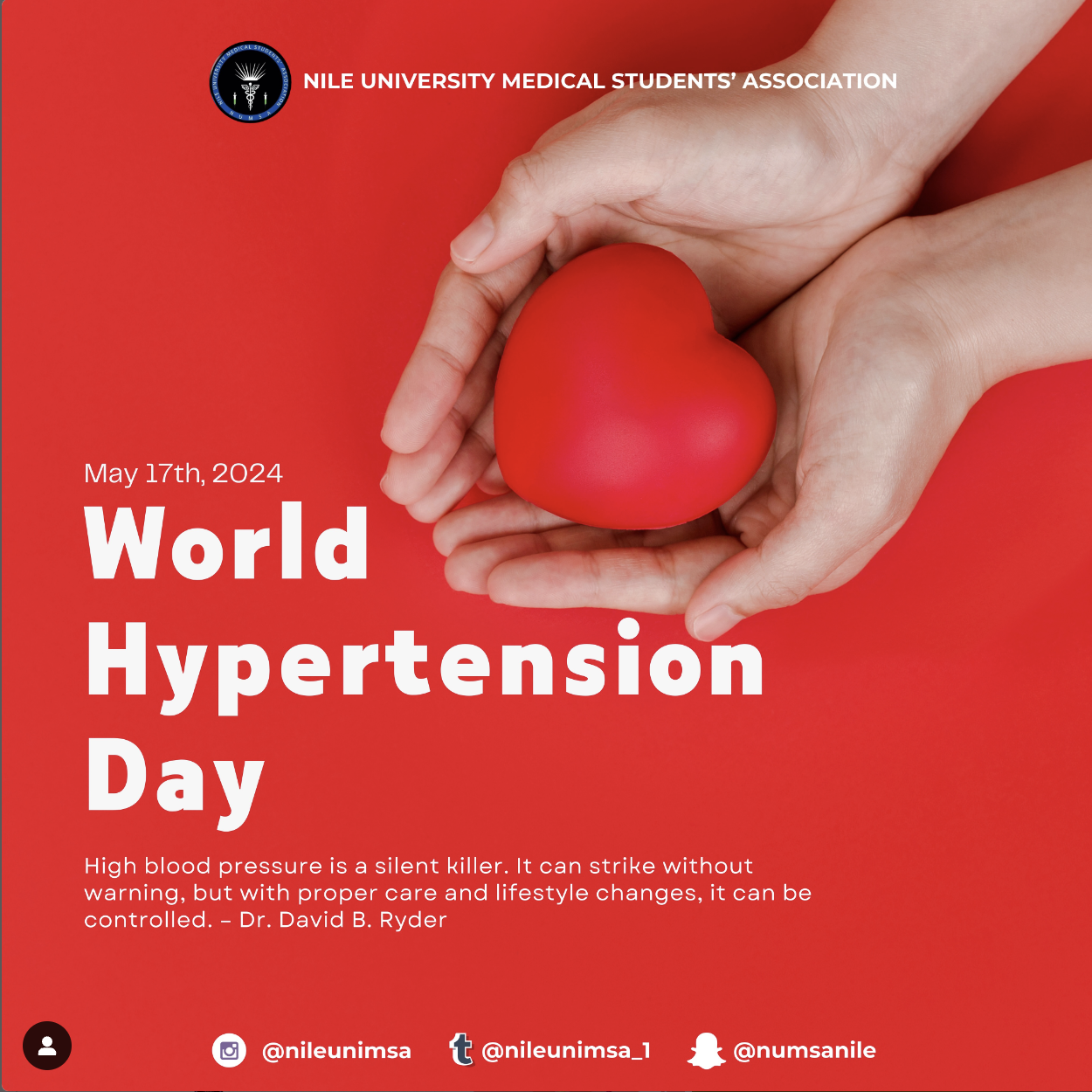World Hypertension Day
High blood pressure is a silent killer. It can strike without warning, but with proper care and lifestyle changes, it can be controlled. - Dr. David B. Ryder

Hypertension, commonly known as high blood pressure, is a chronic medical condition in which the force of the blood against the artery walls is consistently too high. It is a major risk factor for cardiovascular diseases, including heart attack, stroke, and heart failure, and is often referred to as the “silent killer” because it typically has no symptoms until significant damage has occurred.
Symptoms
Hypertension is often asymptomatic, meaning most people do not experience noticeable symptoms. When symptoms do occur, they can include headaches, shortness of breath, nosebleeds, and chest pain, but these are not specific to hypertension and usually appear when blood pressure reaches dangerously high levels.
Causes and Risk Factors
Primary (Essential) Hypertension: The most common type, with no identifiable cause. It develops gradually over many years.
Secondary Hypertension: Caused by underlying conditions such as kidney disease, hormonal disorders, certain medications, or structural abnormalities of the heart and blood vessels.
Risk Factors
Age, family history, obesity, sedentary lifestyle, high salt intake, excessive alcohol consumption, smoking, stress, and chronic conditions such as diabetes and high cholesterol.
Diagnosis
Hypertension is diagnosed using a blood pressure cuff to measure systolic (pressure during heartbeats) and diastolic (pressure between heartbeats) blood pressure.
Blood pressure readings are categorized as follows: Normal: Less than 120/80 mmHg Elevated: Systolic between 120-129 and diastolic less than 80 Hypertension Stage 1: Systolic between 130-139 or diastolic between 80-89 Hypertension Stage 2: Systolic 140 or higher or diastolic 90 or higher Hypertensive Crisis: Systolic over 180 and/or diastolic over 120, requiring immediate medical attention
Treatment
Lifestyle Modifications: Dietary changes, such as reducing salt intake, eating a balanced diet rich in fruits, vegetables, whole grains, and lean proteins (e.g., DASH diet). Regular physical activity, aiming for at least 150 minutes of moderate exercise per week. Weight loss and maintaining a healthy weight. Limiting alcohol intake and quitting smoking. Managing stress through techniques such as mindfulness, meditation, and relaxation exercises.
Medications: If lifestyle changes are insufficient, various medications can be prescribed, including diuretics, ACE inhibitors, angiotensin II receptor blockers (ARBs), calcium channel blockers, beta-blockers, and others. The choice of medication depends on the individual’s overall health and specific medical conditions.
Complications: Untreated or poorly managed hypertension can lead to serious health problems, including heart disease, stroke, kidney damage, vision loss, and vascular dementia. It can also contribute to complications during pregnancy, such as preeclampsia.
Prevention
Regular blood pressure screenings to detect hypertension early. Adopting a healthy lifestyle to maintain normal blood pressure levels. Monitoring and managing other health conditions that can contribute to hypertension, such as diabetes and high cholesterol.
Management
Regular follow-up appointments with healthcare providers to monitor blood pressure and adjust treatment as needed. Adherence to prescribed medication regimens and lifestyle recommendations. Educating patients about the importance of blood pressure control and providing resources for support and self-management. In conclusion, hypertension is a common and potentially dangerous condition that requires ongoing attention and management. By understanding the risk factors, adopting healthy lifestyle habits, and adhering to treatment plans, individuals can effectively control their blood pressure and reduce the risk of serious health complications. Continued research and public health efforts are essential to improve prevention, detection, and treatment of hypertension worldwide.
View more Posts on our Instagram.
NUMSA 23/24 Emmanuel Oranwusi (President) and Abdul-Azeez Ibrahim (Speaker) led administration.